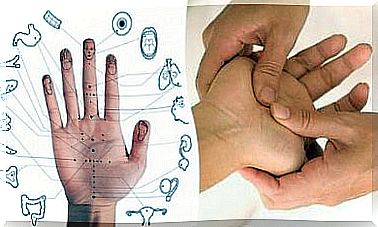LATE: A New Form Of Dementia

Between 15 and 20% of people with Alzheimer’s disease actually suffer from LATE. LATE is a new form of dementia that has hitherto been misdiagnosed as Alzheimer’s disease because its clinical manifestations are similar. Experts expect the incidence to increase in the coming years.
This condition mainly affects the elderly. Like Alzheimer’s disease, LATE causes memory loss and the inability to perform daily activities. In this article, we share their differences and main features.
What is LATE?

The symptoms of LATE are very similar to those of Alzheimer’s disease. In this case, the altered brain protein is TDP-43. LATE is a proteinopathy, meaning it is caused by the alteration of certain proteins. It causes a form of dementia very similar to Alzheimer’s disease.
LATE stands for Limbic-predominant Age-related TDP-43 Encephalopathy. It is an abbreviation that translates freely into ‘age-related brain disease’.
One of the differences between this condition and Alzheimer’s disease is that the altered brain protein is TDP-43. In the case of Alzheimer’s, the proteins TAU and beta-amyloid do not work properly.
The protein TDP-43 is responsible for gene expression in the brain. An accumulation of these ‘poorly folded’ proteins is the cause of this disease. ‘Misfolded’ proteins are proteins with a different shape than normal ones.
An excess of modified proteins causes neurotoxicity and neurodegeneration. Of the people over 85, 25% have so many changes in this protein that they cause symptoms.
Who does this disease affect?
Another notable difference is that the risk of Alzheimer’s does not increase infinitely with age. However, the risk of LATE continues to increase, especially after the age of 80.
The abbreviation LATE was chosen because it also served to define this feature of the pathology. Women are at an increased risk of getting this disease because their life expectancy today is longer than that of men.
As the number of older people over 80 will increase in the coming years, the incidence of this disease will also increase. LATE could therefore become a general public health problem in the coming years.
How is LATE diagnosed?
Due to the advancement of diagnostic techniques, the TDP-43 protein has recently been more accurately identified. Currently, the most accurate techniques for diagnosing Alzheimer’s disease are based on the study of biomarkers in the cerebrospinal fluid.
Such markers are the proteins TAU and beta-amyloid, which we mentioned above. Another diagnostic technique is to find accumulations of these proteins in the brain using imaging techniques, such as PET (PositronEmission Tomography).
However, most often the diagnosis of Alzheimer’s is based on the symptoms and the clinical picture. Doctors rarely request these biochemical tests to confirm or rule out the disease. That’s why some people who have been diagnosed with Alzheimer’s may actually be suffering from LATE.
In the case of LATE, the goal is to use the same techniques as in Alzheimer’s disease, but to look for the TDP-43 protein instead. The presence of a surplus of this protein in its modified form confirms the diagnosis.
The symptoms of this disease

The symptoms of LATE develop more slowly than in other forms of dementia. In its final stage, however, these are similar to the symptoms of advanced Alzheimer’s disease.
LATE causes symptoms that get worse more slowly than in other forms of dementia. Recent studies suggest that the disease progresses in three stages. These stages are then based on the affected brain area and cause more discomfort. These phases are:
- Stage 1: Tonsillar involvement. At this stage, the patient notices subtle mood changes. Mood swings can occur with agitation and even with aggressive outbursts.
- Stage 2: Involvement of the hippocampus. When this area is affected, the signs of amnesia begin to manifest. Although this is not the first stage, it is the main reason why patients go to the doctor.
- Stage 3: Involvement of the medial frontal gyrus. It manifests as changes in behavior and changes in attitude. Patients in this phase have difficulty living a normal life. The behavior then resembles Alzheimer’s disease in an advanced stage.
Importance and conclusions
At present, the discovery of this new disease will not lead to changes in the diagnosis and treatment of the hitherto known forms of dementia. However, it has opened up new areas of research.
However, knowing more accurately the etiology of these diseases allows specific treatments for the different forms to be developed in the future. Currently , there is no effective treatment for such diseases.
However, this will become increasingly important as, as we discussed in previous sections, experts expect the incidence of this disease to increase in the coming years.









